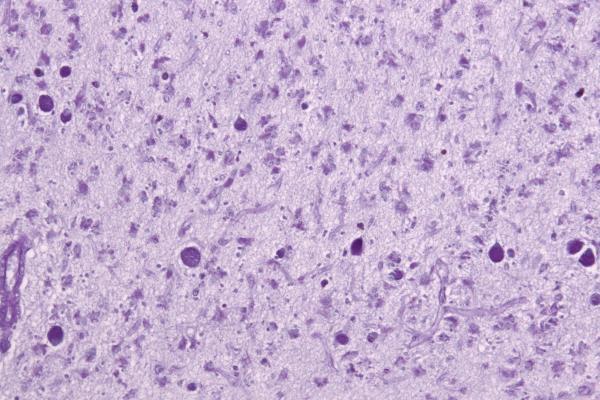Researchers across Europe have put their heads together to combat this complex disease, which is most frequently caused by a group of rare neurodegenerative disorders commonly known as Batten disease.‘We’re still far from reaching curative treatments but we’ve made impressive steps forward in the knowledge of the disease’s cellular mechanisms over the last two decades,’ said Dr Alessandro Simonati from the University of Verona in Italy, who was part of the EU-funded project known as DEM-CHILD that successfully concluded in 2014.Batten disease is a group of devastating and debilitating genetic disorders that affect 14 000 children worldwide, with around 1 400 new cases each year. Children affected by the unrelenting disease lose all abilities over time, including motor, visual and speech abilities, and have uncontrollable seizures, placing a huge burden on patients and their families.At the moment, there are 13 forms of Batten disease that are often subdivided according to the age of onset — infantile, late-infantile, juvenile and the much rarer adult-onset forms — all life-limiting.“‘We’ve made impressive steps forward in the knowledge of the disease’s cellular mechanisms over the last two decades.’Dr Alessandro Simonati, University of Verona, Italy‘The only tools to fight against these diseases are symptomatic drugs that can give some pain relief without dealing with the cause of the condition and the quality of complex care these patients require 24-hours-a-day,’ said Dr Simonati.TreatmentYet there’s hope, the first treatment for one type of Batten disease was approved by the European Medicines Agency in May.‘The development of this new treatment – an enzyme replacement therapy – has been possible only because of the data collected during the DEM-CHILD project, used to measure the effectiveness of this new therapeutic approach,’ said Dr Angela Schulz from the University Medical Center Hamburg-Eppendorf in Germany, the international principal investigator of the clinical trial and project coordinator of DEM-CHILD.‘When we started, there were no treatments approved for Batten disease,’ said Professor Sara Mole from University College London in the UK. ‘The principle behind this new treatment, however, is not applicable to the three types we are working on.’She is looking to develop new therapies for three rare types of Batten disease, in the form of new drugs or gene therapy, as part of the EU-funded BATCure project.‘Gene therapy is at the forefront of the field using very recently described vectors (ways of getting DNA into cells),’ said Prof. Mole.She and her team are working on the most common form of the disease in Europe, where children can usually survive into their late-twenties. The other two types they are working on are more common in Mediterranean countries and, under normal circumstances, children affected by these die in teenage years.Prof. Mole hopes to find therapies for the three types of Batten disease and use the knowledge to develop treatments for adult dementias.Different locationsDeveloping therapies for these three types of Batten disease is very challenging, says Prof. Mole. These types are all caused by mutations in proteins that sit in different locations in the cell. ‘If one therapy doesn’t work, another might.’Because of widely varying genetic mutations, Batten disease types can vary tremendously for each person. ‘The whole cellular system may be perturbed by a single affected gene, but we have to unravel the complex biological and cellular networks to find out what’s going on and fix it,’ said Dr Simonati.Most types of the disease are inherited from parents that may take some years before showing any symptoms in children, so there is a significant risk of multiple children being affected in one family. Researchers on the DEM-CHILD project developed new testing and screening methods, diagnosing it much quicker, more cheaply and more reliably.In addition, the team gathered figures on people affected with the different forms across various countries and established the world’s largest online database of Batten disease patients. This tool can be used to evaluate current and future experimental therapy studies, and is still growing.‘We have to collaborate and combine different innovative approaches using both cellular systems and engineered animals, whose results could later be translated into appropriate and safe therapeutic methods,’ said Dr Simonati.Prof. Mole agrees: ‘I believe this type of translational work requires so much expertise that collaboration is essential.’If you liked this article, please consider sharing it on social media.
This article was originally published in Horizon, the EU Research and Innovation magazine.
Add to favorites:
Share:
Listing Description
Video
Documents
No documents available.
Ask KETMarket to make a contact
Connect with the Listing Owner!
💬 Please log in now to askKETMarket to make a contact. Not a member yet? Sign up for free and start connecting today!
Video
Related Funding and Finance Opportunities
Unlock Exclusive Funding Opportunities!
🔑 Get instant access to tailored funding opportunities that perfectly match your needs. This powerful feature is exclusively available to our premium members—helping you save time, stay ahead of the competition, and secure the right funding faster.
Upgrade to Premium now and never miss an important opportunity again! Already a premium member? Log in here to explore your matches.
Related Innovation Offers
Discover Tailored Innovation Offers!
🚀 Gain access to technology solutions that match your specific needs and interests—carefully selected to support your innovation goals. These offers are exclusively available to our premium members, helping you identify relevant technologies faster and start the right conversations with potential partners.
Upgrade to Premium now and explore your personalized technology matches today! Already a premium member? Log in here to view your tailored offers.
Related Knowledgeable Resources
Discover More with Premium: Related Knowledge Resources
🔒 You’re missing out on expert-curated knowledge specifically matched to this topic. As a Premium member, you gain exclusive access to in-depth articles, guides, and insights that help you make smarter decisions, faster.
Whether you’re preparing a funding proposal, researching a new market, or just need reliable information—our Premium knowledge matches save you hours of research and point you directly to what matters.
Upgrade to Premium now and instantly unlock relevant knowledge tailored to your needs! Already a member? Log in here to view your personalized content.

